Photo Tips and Tricks for Fall and Winter
September 27, 2022
Fall and winter are two of my favorite seasons, and some of the best times to make beautiful pictures. Between the colorful foliage, the eventual snows, all the outdoor activities, and the damp, gray weather, there are so many different things to capture. How can you make your photos stand out? Follow these easy tips and tricks to take your best fall and winter photographs.
Look for Color
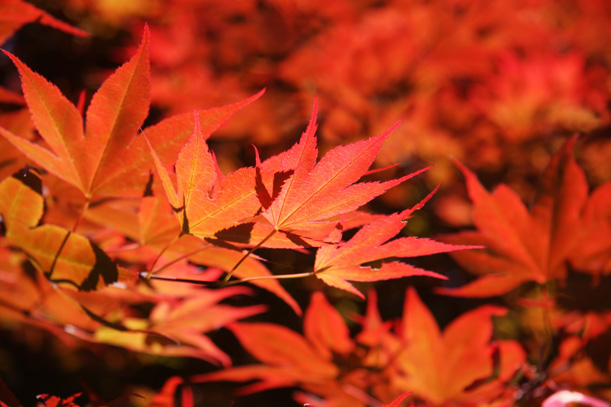
Fall is full of gorgeous reds, oranges, yellows, browns, and so many shades in between. It may seem obvious to look for color to make your pictures brighter and more engaging, but instead of just capturing something colorful, think about making the color or colors your subject. How can you make a photograph of “red” or “yellow”? Turning color into your subject pushes you beyond just documenting and forces you to think more deeply about what color is, what it means, and what truly expresses it.
Change Your Perspective
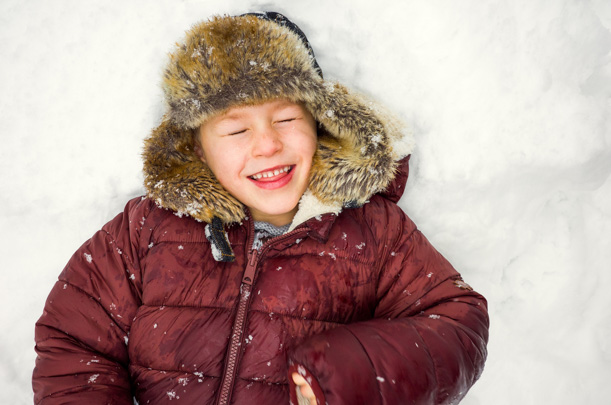
Fall and winter always feel so childlike and full of fun and play. Think about this when making photographs of your children. What do things look like from their perspective, both literally and figuratively? Maybe the leaf pile or snow bank looks larger because they’re viewing it from a lower angle. And what about the perspective of a leaf or a snowflake? Try photographing from above to mimic the viewpoint of falling leaves or snow. You’ll find all sorts of new and creative points of view when you take pictures from perspectives other than your own height.
Capture Movement
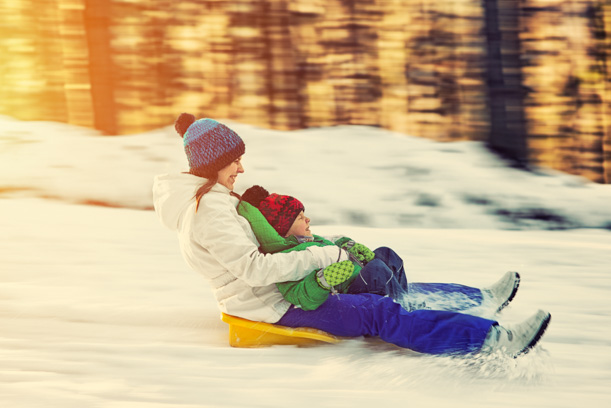
All kinds of things in fall and winter are defined by their movement: blowing snow, falling leaves, playing dogs, steaming cocoa. How can you capture these forms of movement in a way that preserves their motion? If you’re using a DSLR, try putting your camera on shutter priority and setting the shutter speed to something low, say 1/40th or 1/30th of a second, or even lower if you have a tripod. This setting will give some motion blur to your subjects, preserving that feeling of movement in your photograph. If you’re working with a cell phone camera, try panning. This is when you move your camera, tracking your subject as it goes by. You’ll have a sharp subject, but because you physically moved your camera, the background will be blurry. This also gives a sense of movement to your photos.
Get Close
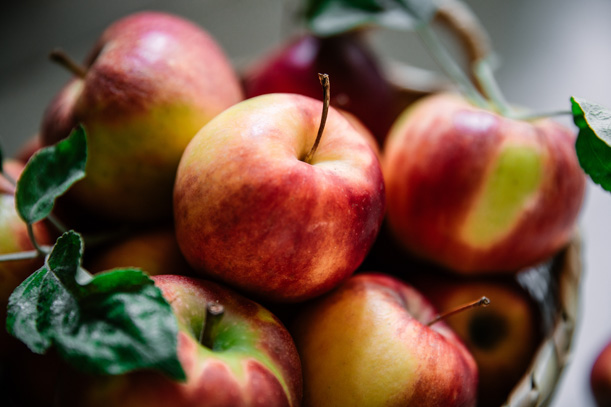
Think about all the little details that make fall and winter so special: snowflakes on eyelashes, bumps and ridges on gourds, veins on a leaf. Instead of zooming in with your lens or your fingers, zoom with your feet and get close to your subject. Depending on the lens you have, you may get so close that your camera can no longer focus on your subject. If that’s the case, step back just until you can focus again. Then make your picture of the beautiful detail you’ve found.
Also Show Your Surroundings
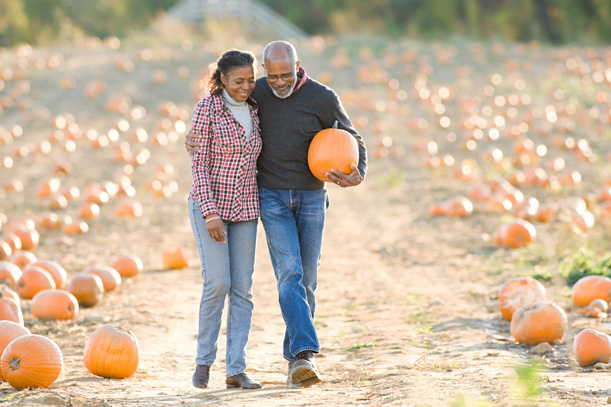
The flip side of getting close is, of course, stepping back. Look around your scene to see what makes the context of it all relevant to your main subject. Maybe you’d like to photograph a snowman your children built, but instead of just showing that one snowman, wouldn’t it be wonderful to also include the field of snowmen that you’re standing in? Maybe there’s a great moment happening in your family, and while you may want to get that up close, also remember to take a step back to capture the surroundings where that moment is taking place. Context will help show that your photos were taken in the midst of fall or the thick of winter.
Overexpose Snow
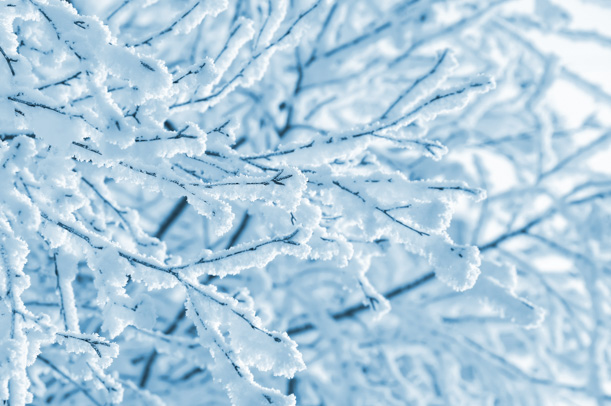
This one’s a little more of a technical tip, but important nonetheless. When photographing snow, especially with a more automatic setting, try to overexpose your photo to get that true bright white. Your camera’s sensor automatically sees snow as a neutral color and wants to turn it gray, so you’ll have to compensate in order to get that bright, white snow. You can do this by overexposing with exposure compensation on your DSLR or on your iPhone by tapping on the snow, holding your finger there, and then dragging it up to increase your exposure. These methods will give you photographs that showcase that bright snow, just as your eye sees it.
Cloudy Days Are Your Friend
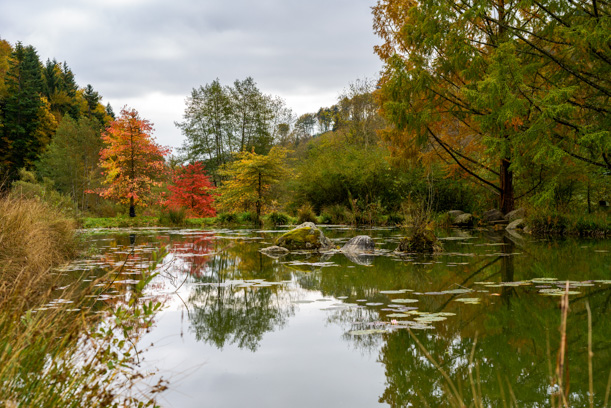
Believe it or not, cloudy days are some of the best days for taking pictures! While some sunny days can have harsh, flat lighting, cloudy days offer softer lighting, help bring out contrast and saturate colors (perfect for fall), and are overall more forgiving for photographers. Don’t be afraid to take a cloudy day photo walk!
The Golden Hour
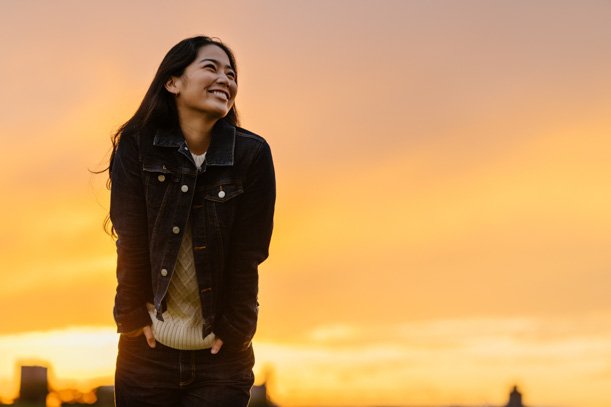
In contrast to cloudy days, some of the best light you’re going to get on sunny days will be early morning and late afternoon light. The sun will be low in the sky, and you’ll get that “golden hour” of time when the sun casts long shadows, warm tones, and gorgeous color. Try waking up just before sunrise or going out the hour before sunset to get that golden hour.